Finding Your Voice, Writing Across Genre And Loving Book Marketing With Betsy Lerner
How can you find your voice through writing in different genres and mediums over the years? How can you shift your mindset around book marketing, whatever your age? Betsy Lerner shares her experience of writing and books over decades in the publishing industry.
In the intro, Going Local: Authors on the payoffs and pitfalls of hometown sales and promotion [Self-Publishing Advice]; Selling Books in Person at Live Events;
Artist = Entrepreneur [Steven Pressfield]; Ecosystems come and go [Seth Godin]; 1000 True Fans [Kevin Kelly].
Plus, Exeter Cathedral, Death Valley, a Thriller; Successful Self-Publishing Fourth Edition; and The AI-Assisted Artisan Author webinar.

This podcast is sponsored by Kobo Writing Life, which helps authors self-publish and reach readers in global markets through the Kobo eco-system. You can also subscribe to the Kobo Writing Life podcast for interviews with successful indie authors.
This show is also supported by my Patrons. Join my Community at Patreon.com/thecreativepenn
Betsy Lerner is an award-winning editor, literary agent and the author of fiction, non-fiction and memoir. Her book for writers is The Forest for the Trees: An Editor’s Advice to Writers.
You can listen above or on your favorite podcast app or read the notes and links below. Here are the highlights and the full transcript is below.
Show Notes
- The publishing hierarchy—and the love of books that brings us together
- Tips to overcome your perception of writers vs. your own potential
- Balancing the desire for success and the fear of failure
- How writing can help one cope with grief
- Balancing editorial feedback and maintaining creative confidence
- Why publishers want their authors to have a pre-existing platform
- Embracing TikTok and BookTok at any age
- Navigating the current publishing industry
You can find Betsy at BetsyLerner.com or on Tiktok at @BetsyLerner.
Transcript of Interview with Betsy Lerner
Joanna: Betsy Lerner is an award-winning editor, literary agent and the author of fiction, non-fiction and memoir. Her book for writers is The Forest for the Trees: An Editor’s Advice to Writers.
So welcome to the show, Betsy.
Betsy: Thank you so much.
Joanna: Oh, it’s great to have you on. So first up—
Tell us a bit more about you and how you have managed to experience almost every aspect of publishing across your career.
Betsy: Publishing was actually not my first dream. I went to NYU for film school my freshman year, and I was “invited to leave” after the first year. That was devastating.
I was not kicked out of school completely. I finished and got my degree in English, and then, like most English majors, was at a complete loss of what to do. I could not get a publishing job because I couldn’t pass a typing test, which was required back in 1982.
So I did a stop gap, and I worked at an investment bank for a couple of years in the library. I got it together to apply to graduate school, and I went for my MFA in poetry.
At that time, I interned at a literary agency. That was really my first bite into the publishing world. I absolutely loved it.
I loved being around writers and books and book jackets and galleys and all the accoutrements of that world.
So when I finished my MFA, I went into publishing. I climbed the editorial ladder, as one does in the States. I’m not quite sure if it’s the same in the UK. You go from being an editorial assistant to an assistant editor, editor, senior editor, etc.
I really thrived and loved it very much. I became an agent when I had my child, and pre-pandemic there was no flexibility in the publishing houses. You couldn’t even work at home for a half a day, let alone remote work. So I eventually crossed over to agenting, really for the flexibility of my time.
Over these 40 years, I managed to write a few books every few years or so. I think the writer in me always sort of played second fiddle to the editor or agent in me. It always sort of came out one way or another.
Joanna: I love that. You said how much you found a home in publishing because you love books and all the things of being around books.
That’s what I wanted people to remember. Often, there’s always this stuff about, oh, this editor or this publishing house or this agent, or whatever. People always want to moan. We’re just all book people, right?
We all love books. That’s why, despite all the ups and downs, we all want to be in this industry.
Betsy: Absolutely.
There’s, in my mind, sort of this hierarchy where everybody wants to be the writer. Then next best is the editor. Then next best is the marketing, publicity, sales person.
Also, all the wonderful designers and illustrators and people who make book jackets. Everybody is all in it together, but I’ve often found that the people behind the scenes get very little credit.
I always, as an editor and even as an agent, always really loved and respected all the people all up and down the chain who contributed. Yes, all book people, big readers, movie goers, pop culture people.
I’ve had a wonderful 40 years in the industry, even with all the ups and downs, and there are many downs.
Joanna: Yes, we’ll come back to those. You said that everyone wants to be the writer, like that’s the first thing. In the book, you have this wonderful line:
“When I entered the business, I believed that writers were exalted beings.”
That made me smile because I remember feeling like that. I always was a reader, and I thought I could never be a writer, because they’re so special, and it stopped me.
So what can you say to people listening to encourage people, like if they’re still feeling the separation between what they think a writer is and the truth of it?
Betsy: Well, the answer is very complex, but it’s also very simple.
You have to write.
There are so many people who say they want to be writers and dream of being writers and have stories inside them, etc, etc.
The fact is if you aren’t actually writing, whatever form it takes, it’s not going to happen.
It’s a craft and it takes a lot of time and practice.
So I always tell people, do you write diaries? Do you keep notebooks? Are you writing blogs? Are you doing Substack? What writing are you actually doing?
It doesn’t all have to be prose. I wrote screenplays for years. I blogged for years. All of that was in the development of my voice and in my ability to story tell. Then, of course, all the editing that I did, I really learned what goes into making a book.
The key thing is simply writing and understanding that all the writing you do is either in practice of the professional writing you might do, or it’s just who you are and how you express yourself.
Joanna: Well, it’s interesting there. You talk there about you have to write and the different types of writing, but, of course —
You were 64 when you wrote your first novel.
You’ve written loads of different things. Tell us about that. There’s this idea that you have to be young and beautiful to do your debut novel, right?
The people who seem to get all the press are the young debut writers. So tell us a bit more about that experience.
Betsy: When I was in my 20s, if I could have published a book, I’m sure I would have. I did not have it together. I went into publishing really, as I said, sort of as a default.
I did have my MFA in poetry, and many of my fellow poets were going off to write and teach. I just didn’t have access to any of those opportunities, nor did I think I would be particularly good at it.
Fast forward, it was the pandemic. I did have more time on my hands. I had also just come through an extremely traumatic time in my life. My niece and nephew were killed by a drunk driver, then my mom passed away, and then my best friend committed suicide. Those tragedies all happened in the space of four or five months. I was in some sort of shock.
I was in deep grief, and I guess I wrote my way out of it.
I just sat down one day, opened my laptop and wrote the first words of the book, which are: “Here are the ways I could start this story.”
I wrote for seven months, four or five hours a day, really until my hands cramped. I just poured this book out of myself. I don’t think magic happened and I wrote a novel, I do think it is based on 40 years of keeping diaries, blogging, developing my voice. Writing those screenplays really taught me how to write plot.
So I think all the writing I did came together in this novel in my mid-60s. I was very fortunate that I was able to get it published. I found a small publisher who was able to say, instead of being a hot, young debut novelist, I was a senior, late bloomer. I had all this experience.
We were able to do a bunch of publicity around the fact that I was a literary agent turned novelist. So my age sort of worked for me, both in the experience of writing and the attention I was able to get.
Joanna: That’s a great way to put it. Obviously those tragedies are awful, and it’s amazing that you managed to write your way out of it, as you said. Just for that, is the book about surviving tragedy?
How did those things that happened to you emerge in the writing?
Or do you think it was just an entirely different thing? You better tell us the title as well.
Betsy: Well, the title is Shred Sisters. It’s really a book about two sisters. The older sister has bipolar illness, and the younger sister is the narrator.
It’s coming-of-age and how she lived under the shadow of this very destructive, and yet charismatic sister. It doesn’t involve the tragedies at all, except for the fact that a number of people do die in the book.
It is a way, I guess, that I really coped with a lot of grief, but it’s a separate story from that. I feel that all of those events are deeply connected to my writing fiction for the first time.
Joanna: Well, it’s interesting because you’ve also written several memoirs, including Food and Loathing, which I saw that title and was like, oh my goodness, that is such a powerful title. That’s about disordered eating.
The Bridge Ladies is about your mum. You’ve clearly delved into really personal things before. This book, The Forest for the Trees, is also really personal.
So how do you do that? I do it now, but I know how hard it is for people to really put themselves out there in words.
Fear of judgment is a big thing. How did you get over that for your memoir and everything you write?
Betsy: I think because I kept diaries from the age of nine or 10, daily diaries for my whole life. Then when I became interested in poetry, it was the confessional poets who really drew me in. Sylvia Plath and Anne Sexton and Robert Lowell were among my favorite writers.
So I’ve always been interested in first-person writing, in intimate writing, and confessional writing. Then as an editor, I really became known for working with authors on their memoirs.
I worked on Prozac Nation by Elizabeth Wurtzel and Autobiography of a Face by Lucy Grealy. I eventually became the agent and editor for Patti Smith’s Just Kids and all of her memoirs. It’s really what I most love and gravitate towards.
When I started to write The Forest for the Trees, I didn’t see that as an entirely personal book. I was writing in my persona as an editor. Then when I did write Food and Loathing, I think I just felt that it was my time to write.
I wanted to write my story. I felt bold. I didn’t want to pull back, really, If I was going to do it, I was going to do it—I guess is what I was thinking.
Do I now sometimes regret some of the things I wrote in that book? Possibly. I had a lot of bravado, I guess. I had worked on so many memoirs, and I just thought I wanted to tell my story. I was lucky that I had the chance to publish it.
Joanna: It’s so interesting. You keep saying that you’ve been lucky to publish or you were lucky to find a publisher. You’ve been in publishing for 40 years, and you’re an agent.
How is it that somebody like you would even struggle to find a publisher?
Betsy: Well, I guess it’s more that my ego, my self-esteem, all come from being an editor and an agent. If you meet me on a plane and you say, what do you do? I’ll say, I’m a literary agent. I would never say I’m a writer.
It doesn’t matter how many books I have published. It’s just not my identity, and I don’t know why that is. I mean, it’s a shame, I should own it. I still feel more comfortable behind the desk.
I do feel very lucky. A lot of people in publishing write and want to be published. I just don’t take it for granted. Yes, I had connections. I was able to find an agent more easily than someone who’s not in the business.
I still think it’s a privilege to find people who are willing to actually pay you and work with you and put your work out there.
Joanna: Interesting. Well, then coming back to your work editing memoirs. If you have a writer who brings you a manuscript and you’re like, they have not let it all out—
How do you encourage a writer to be more personal in their writing?
Betsy: If I’ve accepted a book and I’m working with the person, we have an understanding that I would expect certain revisions from them. I would be very clear about what they would be.
That might include going deeper in certain parts and investigating certain questions that are left clearly unsaid or holes in the manuscript.
I recently read a manuscript by a woman with a child with a disability, and she never described what the disability was. Yet there was something very moving about the book, and I said to her, this can’t be a question mark if you’re going to write this book. So that was a very obvious one.
Sometimes it’s just more subtle. Sometimes you say too much, actually, and understatement can be more effective. It’s not necessarily saying more, it’s just crafting. Memoirs are crafted. They propose to be the truth, but they’re really a work of art, in my opinion.
The quality of the writing is what makes people invested and believe in the story that they’re being given.
Joanna: Well, in another aspect of the book, you say —
“Most writers have very little choice in what they write about.”
You talk about the obsessions, and themes returning, and this finding your voice.
I remember finding this very difficult at the beginning of my career. Like, what is this finding your voice? So there might be people listening who feel that way. So how can writers identify these things?
Betsy: That’s such a good question. I think it’s organic, and it starts probably with what you gravitate towards as a reader. If you sit down to write science fiction, my guess is that you’ve read a ton of it as a kid and as a teenager.
You’ve immersed yourself in that world. It’s a world you love. It’s a world that sparks your own imagination.
I think I did a lot of personal writing because of how much I connected with books like The Bell Jar and Diary of Anne Frank and things like that when I was a girl.
So I think your voice is part of the world that you immerse yourself in. Becoming good at it really just takes a lot of practice, and getting feedback, and doing revisions, and putting in the hours, putting in the hard work.
It’s very unusual that somebody who’s never read in a certain genre is suddenly going to be great at that genre. At least in my experience, people write out of the worlds that they know.
Joanna: I guess with author voice, so this idea of creative confidence as well—like, I’m pretty confident in what is my J.F. Penn writing, which is my fiction and memoir brand. I know what is me, and I work with an editor, but she also knows me.
Now, I hear from people who work with editors, and there’s a real line between an editor trying to make your book better and an editor who you feel might be affecting your voice.
How can people listening ascertain where an editor would sit on that continuum and when an editor is a good fit?
Betsy: I’ve had many editors, and I would say everybody has added something of value. Certainly there were people who also stymied me with their notes, or even frightened me or put me off completely. I’ve had every experience.
Then with my novel, I had the most wonderful editor who completely helped me make the book better. They actually really taught me how to be a better writer in the process, which is something that has stayed with me even beyond working on that book.
It’s very intimidating if you’re a new writer and your editor tells you something, you think you have to do it. It takes a bit of spine to not do it.
Then are you doing that at your own peril? Are you being defensive? Are you not really listening? Or is the advice bad?
When you’re a beginning writer, it’s very difficult to parse all of that. It takes time and experience and even a little bit of luck to find the editor with whom you feel you’re really a hand in glove in what you’re doing.
I think a lot of people do suffer at the hands of editors. Then, of course, many people are extremely helped, then everything in the middle.
Joanna: Well, I think that’s the point—it’s not like the first editor you ever work with is it for the rest of your life. You will have different editors in your life. The relationships will be different, a bit like our friendships or partners or whatever. So yes, I think you kind of touched on that.
I also was interested, you have a lot in this book, The Forest for the Trees, around mindset. I particularly like this line: “The desire for success and the fear of failure run along a continuum.” So talk about that from your own perspective.
How have you balanced desire for success and the fear of failure?
Betsy: I love that question. It’s something I think about probably on a daily basis. I think that the act of writing, the desire to be in your own mind, in your own sort of playground, and the beautiful solitude of it all, is really what the heart of writing is all about.
At the same time, I would say most people are writing, even in a diary, with the hope of being read. So they’re very connected. When you read writers’ diaries, you can tell that they’re not just writing for themselves. It’s almost as if they have an audience in mind.
So I think that when we’re writing, it is about the desire to communicate, even though we really are writing alone, and in many ways for ourselves.
The ego can get very tied up in that. There are some writers who are obsessed with success. I work with one writer who’s a complete and total recluse, and never reads her reviews, and doesn’t want to know anything besides just getting her contract and getting her book out there. She does no publicity either, by the way, which makes it very difficult to publish her.
That’s what I mean about the continuum. There are some people who are so blinded by the desire for success that their work almost seems to be secondary.
Obviously, the best is to find some balance between your discipline, and love of writing, and the outcome for any book that you create, and how much energy you’re going to put into that, and how much the world is going to welcome it or not.
So many books get published with no fanfare at all, and it’s always just a very few every season that seem to get all the attention.
Writers have to learn how to live with those outcomes and see if they’re willing to keep going.
Joanna: How have your books gone in that way? Have you hit the success as a writer? I mean, you said before that you didn’t identify that way.
Do you feel like you are a successful writer, as well as an award-winning editor and all the other things you are?
Betsy: Yes, but I work very hard at it.
Part of why I was so drawn to your podcast, in fact, is that —
I love marketing. I love publicity. I love figuring out how to get the work out there.
I’ve mostly done that for my clients and my authors, but when I have published my books, with each consecutive book, I’ve gotten better and bolder at doing the marketing.
So with this novel, for instance, I pulled out all the stops. I did everything I humanly could. I even got on TikTok and befriended book influencers. I made fortune cookies with lines from the book inside and gave them out at readings.
I wrote hundreds of note cards to librarians and booksellers and people in the media that I had even the most tangential relationship with. I’ve been helping my authors for all of these years try to get attention for their books in every imaginable way possible.
With Forest for the Trees, with my first book, I did write to a ton of writing conferences and MFA programs and offered to give talks and send free copies and do that sort of thing. I am very proud of it because it’s still in print all these years later. I still hear from people that it’s helped them, and that’s so rewarding.
Joanna: Wow, everyone’s still reeling at your comment, “I love marketing.”
So yes, obviously you’re full of ideas of different kinds of things. Then you also mentioned this writer before who’s a recluse and doesn’t do any marketing. So how can writers listening change their attitude?
How can people learn to love marketing like you do, and be creative with it as you’ve obviously been?
Betsy: Well, it’s really difficult, since most writers do enjoy their solitude and may not be the most social people going. Some people just turn their nose up at marketing. People have such a strange idea of marketing and sales.
In my mind, what it all boils down to is communicating and figuring out that one-line pitch that can get people interested in your book, then just putting a lot of elbow grease into it.
I often use the metaphor of, if you were to open a store and you lovingly furnished it with all sorts of goods that you’ve hand-picked, and you’ve made the store so beautiful, but then all you did was put an open sign in the door—nobody’s really—maybe one or two people might walk in.
If you wanted a lot of customers, you’d have to do some outreach. So it’s just outreach.
It is a different head.
You have to be very sensitive to be a writer, but you also have to be sort of thick-skinned to get out there and sell your book and market your book.
These days, even the big publishers often don’t do all that much, and it really is up to the author if they want to get the word out.
Another thing I often ask writers too is, what are your goals? What do you want this book to do for you? How many copies do you think you want to sell? Do you want to use it as a calling card to get a job or to get speaking engagements?
Do you have a political agenda? Why are you writing this book? What do you want it to do in the world?
A lot of writers say, “I hadn’t thought about that.” So I say, think about that, and then let’s make a plan that’s commensurate with your goals.
Joanna: Yes, you said there that a lot of publishers don’t even do much marketing for books anymore.
I think certainly in the self-publishing and the independent publishing side of things, I hear often people say, “I don’t want to do any marketing, so I’ll just get a traditional publisher, and then they will do it all for me.” Right? Is that just not true anymore?
Betsy: It’s not true anymore. It’s not true at all. In fact —
Publishers these days are most drawn to authors who come with a platform —
either a large social media platform or an institutional platform, because that helps them sell their books. They’ve identified the market already.
It’s disheartening. I remember the first time I was agenting a book, and the editor, before even asking, “What is the title? Who is the author? What’s it about?” said, “What’s their platform?” I was so taken aback.
Another time, I heard an author, an editor, I was pitching a book, and I heard clicking, and I knew the editor was looking up the sales figures for the author rather than listening to my pitch about my passion for the book.
That’s when I knew—and I’d say that was about 10 years ago—the landscape had completely shifted from content-based material to platform-based material.
Joanna: I think people, even though we’re all book people, like we said at the beginning, people still have to make money in a business. I think it’s important that we think about that sales side, even though, as you said, it’s like a different head.
I do have to come back to TikTok, because I did actually go and look at your TikTok channel. I have basically refused to do TikTok. I’m like, I do audio as my main marketing channel, and I do a little bit of social media.
You’re on TikTok, so tell us about that. Why did you decide to jump in?
What kind of things do you do? And are you still doing it?
Betsy: Yes, I’m still doing it. I love it.
I went on out of curiosity, because as I said, the landscape was changing. As of about somewhere in the middle of COVID, people began saying that BookTok was the only thing moving the needle for selling books. Everyone saw the Colleen Hoover phenomenon, and then romantasy.
I started to recognize that it wasn’t just genre and romantasy, but literary books were also getting a big bump on BookTok. I decided I had to see what this was that everyone said was moving the needle, even though most people in publishing were not going on BookTok at all or getting their marketing teams excited about it.
Just a couple of publishers were at the vanguard. In any case, I wanted to learn about it as a literary agent to help my clients, but also because I had a novel coming out and thought maybe I could get some of these book influencers to talk about my book.
So I got on the platform, started learning, and started became part of the community by leaving comments on other BookTokers’ videos. Some dialogue started happening, and I reached out to many book influencers, asking if I could send them my galley.
A lot of them said yes and many posted about my book. So that was really exciting for me watching young people with tattoos and nose rings holding my little book and saying why they liked it so much. It was fantastic.
I also thought maybe I could create some content. I started reading snippets from my diaries from my 20s.
I found very quickly that I could build an audience, and many young people resonated with my diary entries and made them feel less alone in the world.
Most of my entries are all about being someone in their 20s who is sad and lost. Turns out there’s still a lot of lost and said people in their 20s out there.
Joanna: I was so impressed with your videos.
I feel—I don’t know, and this is totally about me, this is not about anyone else—but that I somehow have to do my hair and makeup. I know it’s not meant to be scripted, but to turn on a video and start talking or share bits of your diary as you do.
You have your face there and everything. You’re there. It’s not just your diaries. If people are worried, like me—
What would you say to people like me? Is it really worth it? Do people have to get over themselves?
Betsy: That’s a great question. When I first started trying on BookTok, I refused to be on camera. I was just posting these little literary tidbits of books that I liked. I was just messing around.
One of our clients, who’s big on BookTok, called me and said, “Your stuff is adorable, but you’re not getting any traction. You won’t get any unless you get on camera.”
I said, “No way, no way, no way.” About a month later, I saw her somewhere. She said, “So how are you doing on the platform?” I said, “I’m not getting anywhere. “
She said, “Are you going to get on camera or not?” I said, “I don’t think so.” She explained how my posts were all random and that —
To get traction, you have to pick a lane, and do something people know you for. Think of it as your own little TV show.
That’s when I thought, all right, maybe I’ll try it. What the hell?
By the way, nobody I know is on TikTok, so I had nothing to be worried about. That night, I went home and realized I have all these diaries. Maybe I can do this. That first post that I did went viral, so that was very encouraging. Not all posts go viral—many don’t.
I have built an audience. I have over 30,000 followers. My posts generally get a good reception. Every now and then, one goes viral. I find it extremely exciting. I’m a child. What can I say? I love attention. I love the app.
I’ve made some very good friends. Even in real life, I’ve met some of these BookTokers. They’re all young, and I just think they’re fantastic.
Joanna: I love that. It’s interesting because I got on Twitter, as it was back then, in 2009. For those first few years of being in Twitter, a lot of my friends in real life are people I met on Twitter back then. I built a lot of my business on Twitter.
Obviously, that platform has changed. That almost feels like what you’re talking about there with TikTok and BookTok. So I love to hear that. Hopefully, that encourages people of different ages. I always hear people say to me, it’s only for people in their 20s and 30s.
There really are a lot of different ages and demographics now, aren’t there?
Betsy: Absolutely. Also, I’m a big science person. Within TikTok, there’s everything under the sun, including STEMTok. I watch a lot of scientists talk about their work. I’ve even found clients on TikTok. We represent this incredible linguist called Etymology Nerd and sold his book.
I’m working with an ornithologist who has a fantastic following and is a wonderful communicator. Yes, there are a lot of cowboys dancing without their shirts on and kitten videos, that’s all there.
If you have a real interest, you’ll probably also find people making content, either there, or on YouTube, or even on Instagram now people are doing videos.
It is sort of the Wild West. There’s a lot out there, and it takes some time to figure out how to use the platform. I’m really happy to hear you found real friends through Twitter. I think people don’t understand that social networks are also about connecting.
The BookTokers who I’ve become friends with are people who, if I’d met them at a party, I would have loved to have met them. They’re young, vibrant, read tons of books, and have tons of opinions. Yes, and they’re not just talking about their knee replacements, and mortgages, and Medicare. I really appreciate that.
Joanna: I love that. You are really fun!
What I actually really enjoyed about your book is it’s very ‘voicey.’ I can hear your fun and your opinions, which I really like. I think that’s great. Obviously, people can check you out on TikTok.
I wanted to come back to publishing because in the book, you say,
“The cyclical nature of the publishing business, the brutality of the media, and the vagaries of the marketplace are things that we all have to get used to.”
So I wondered if you could maybe give us a perspective on the changes of the publishing industry that are still happening, and, in fact, even more so with AI. How can authors now navigate the industry?
Betsy: That’s such a big question. It’s so difficult. At least in the States, the biggest problem is when I entered publishing, there were about 40 publishers. Now they’re called the Big Five. It’s all been conglomerated.
There are many imprints within each major publisher, but they all basically run the same way and have the same mindset about publishing. People want either the hot, sexy debut author, or the author with the big platform, or the celebrity, or the CEO. That’s what the world really wants.
If you’re a literary writer or genre writer, you might have to make your way not looking at the big publishers in the beginning, as you develop your audience and grow as a writer.
Getting published by a major publisher isn’t the end-all and be-all anymore.
Even someone like Colleen Hoover started by self-publishing. There’s a real path outside of traditional publishing. I still work within traditional publishing. I still am able to break writers in, but it’s much more difficult that it used to be.
There’s much more scrutiny before a book is acquired. Authors just have to have a bigger platform or some real literary fairy dust that’s been sprinkled on them, either by other famous writers, or an MFA program, or publishing in a very high quality magazine.
I would just say that —
You better really love writing, because it’s a long haul and it’s very difficult to sustain a career. So it just has to be what you have to do.
I’ve always written part time. I’ve always had my day job. I think most writers have to survive by also doing other jobs, unless you really break through.
So you just have to understand that you’re probably going to have to do other work to sustain yourself, but if writing is what you have to do, then you’ll find a way.
Joanna: You said earlier, every couple of years, you end up writing another book. So you clearly can’t help yourself.
Betsy: Exactly. For all the books I’ve published, I have many unfinished notebooks. I have many projects that have never seen the light of day. I’ve got seven screenplays—if there are any producers listening. I have an MFA collection of poetry that will never see the light of day.
That’s all fine, because that’s all of what you do to develop as a writer, and that goes into the books that you do eventually publish. All of the unpublished work is, to me, I’m as proud of that as I am of the published work. More than that, it sustained me and kept me going, because that’s really how I live.
Joanna: Fantastic.
Where can people find you and your books online?
Betsy: Well, there’s always Amazon, of course. I love to direct people to Bookshop, which basically is also an online a bookseller that taps your local booksellers, which is fantastic. Also Indiebound.
I’m on TikTok at @BetsyLerner. I have my blog, which is BetsyLerner.com. That’s really a community of miserable writers coming to check in on the misery that I post.
Now, only maybe every few weeks, but I had posted for many, many years, and that’s all there in the archives. For any writing lonely hearts, I have a wonderful community of malcontents who read my blog.
Joanna: Brilliant. Thanks so much for your time, Betsy. That was great.
Betsy: Thank you so much. I really appreciate it.
The post Finding Your Voice, Writing Across Genre And Loving Book Marketing With Betsy Lerner first appeared on The Creative Penn.
Go to Source
Author: Joanna Penn

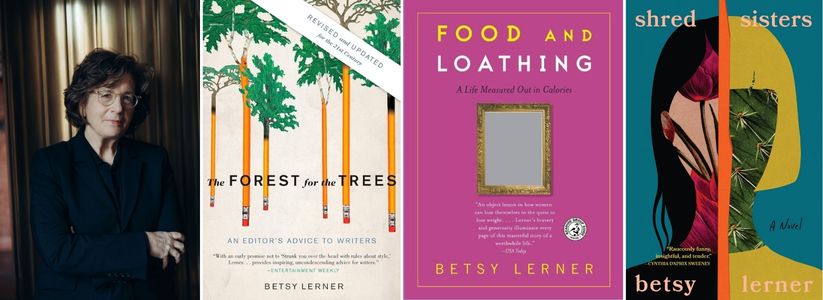
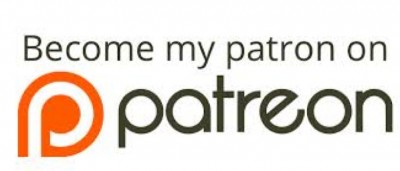

 One of the most interesting challenges of writing a series is figuring out how to create different character arcs for the same character, without it feeling repetitive or forced. Whether you’re writing a progressive arc that unfolds over several books or you’re exploring entirely different arcs in each installment, the goal is always to keep the character’s journey fresh and meaningful.
One of the most interesting challenges of writing a series is figuring out how to create different character arcs for the same character, without it feeling repetitive or forced. Whether you’re writing a progressive arc that unfolds over several books or you’re exploring entirely different arcs in each installment, the goal is always to keep the character’s journey fresh and meaningful.









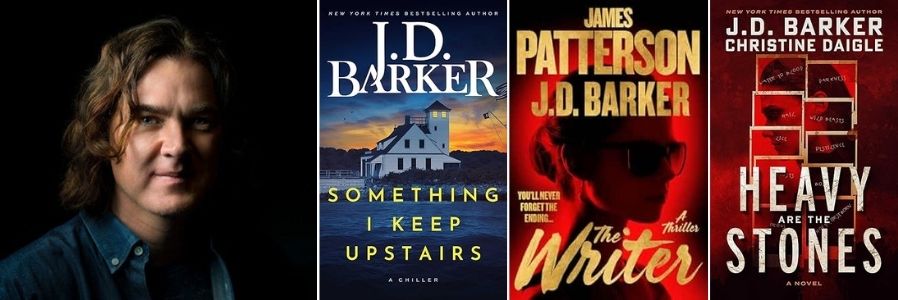
 Note From KMW: This week’s post is a quick one—but it covers a sneaky little habit that can creep into even the best of stories: overexplaining in dialogue. I’ve seen it in books I’ve read, and I’ve definitely caught myself doing it too. It’s easy to do when we want to make sure readers really understand what’s going on, but often, this dialogue mistake just ends up slowing the story and undercutting our characters.
Note From KMW: This week’s post is a quick one—but it covers a sneaky little habit that can creep into even the best of stories: overexplaining in dialogue. I’ve seen it in books I’ve read, and I’ve definitely caught myself doing it too. It’s easy to do when we want to make sure readers really understand what’s going on, but often, this dialogue mistake just ends up slowing the story and undercutting our characters.
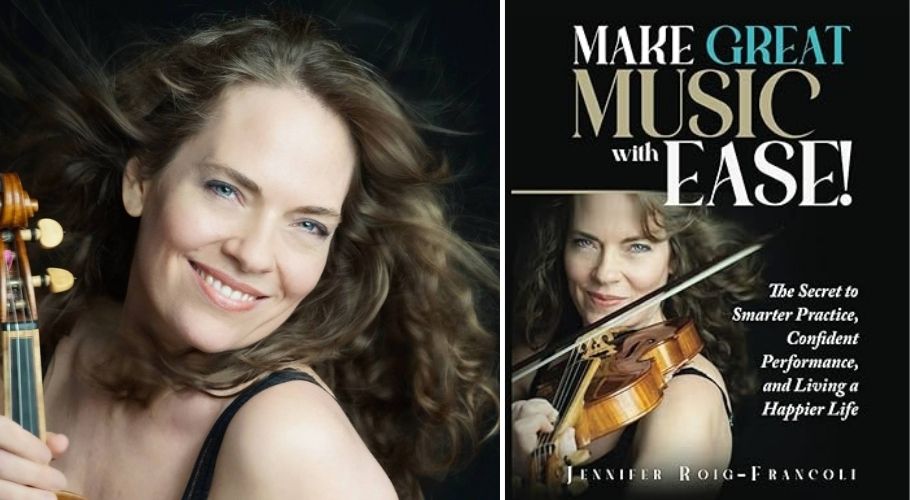
 Note From KMW: Before we get started today, this is just a quick note to let you know that today is the final day you can
Note From KMW: Before we get started today, this is just a quick note to let you know that today is the final day you can


























 Using the Enneagram for character development can be a game-changer for crafting layered, believable characters. This ancient personality typing system can offer deep insight into your characters’ core fears and motivations, which makes it a natural fit for building compelling internal arcs. Because the Enneagram inherently emphasizes personal misconceptions (aka, the Lie the Character Believes), thematic Truths, and both Positive and Negative Change Arcs, it becomes an extremely intuitive tool for creating complex and realistic characters. But there is a rub.
Using the Enneagram for character development can be a game-changer for crafting layered, believable characters. This ancient personality typing system can offer deep insight into your characters’ core fears and motivations, which makes it a natural fit for building compelling internal arcs. Because the Enneagram inherently emphasizes personal misconceptions (aka, the Lie the Character Believes), thematic Truths, and both Positive and Negative Change Arcs, it becomes an extremely intuitive tool for creating complex and realistic characters. But there is a rub.






























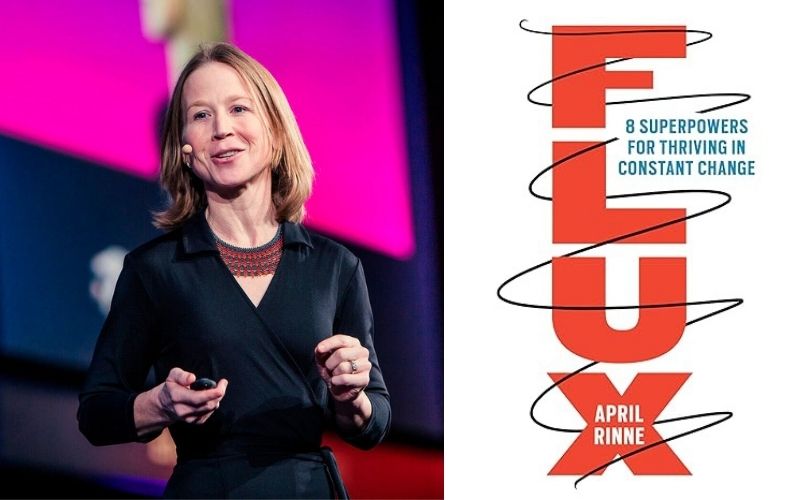




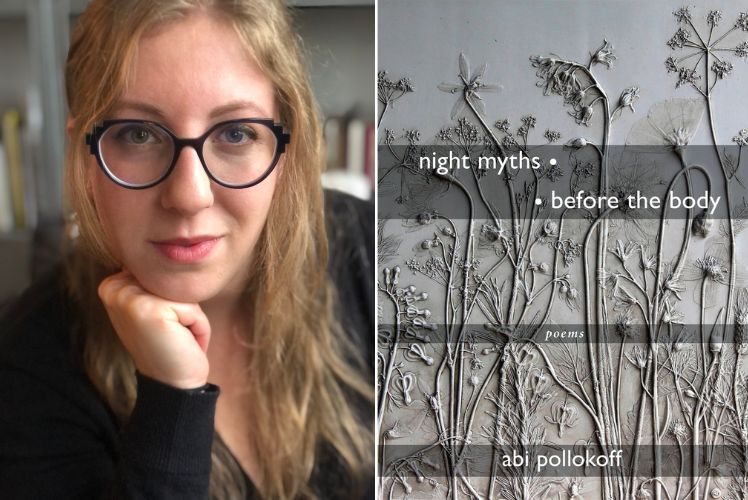
Recent Comments